Implementing an online pharmaceutical service using design science research
- PMID: 28347304
- PMCID: PMC5369181
- DOI: 10.1186/s12911-017-0428-2
Implementing an online pharmaceutical service using design science research
Abstract
Background: The rising prevalence of chronic diseases is pressing health systems to introduce reforms. Primary healthcare and multidisciplinary models have been suggested as approaches to deal with this challenge, with new roles for nurses and pharmacists being advocated. More recently, implementing healthcare based on information systems and technologies (e.g. eHealth) has been proposed as a way to improve health services. However, implementing online pharmaceutical services, including their adoption by pharmacists and patients, is still an open research question. In this paper we present ePharmacare, a new online pharmaceutical service implemented using Design Science Research.
Methods: The Design Science Research Methodology (DSRM) was chosen to implement this online service for chronic diseases management. In the paper, DSRM's different activities are explained, from the definition of the problem to the evaluation of the artifact. During the design and development activities, surveys, observations, focus groups, and eye-tracking glasses were used to validate pharmacists' and patients' requirements. During the demonstration and evaluation activities the new service was used with real-world pharmacists and patients.
Results: The results show the contribution of DSRM in the implementation of online services for pharmacies. We found that pharmacists spend only 50% of their time interacting with patients, uncovering a clear opportunity to implement online pharmaceutical care services. On the other hand, patients that regularly visit the same pharmacy recognize the value in patient follow-up demanding to use channels such as the Internet for their pharmacy interactions. Limitations were identified regarding the high workload of pharmacists, but particularly their lack of know-how and experience in dealing with information systems (IST) for the provision of pharmaceutical services.
Conclusions: This paper summarizes a research project in which an online pharmaceutical service was proposed, designed, developed, demonstrated and evaluated using DSRM. The main barriers for pharmacists' adoption of online pharmaceutical services provision were the lack of time, time management and information systems usage skills, as well as a precise role definition within pharmacies. These problems can be addressed with proper training and services reorganization, two proposals to be investigated in future works.
Keywords: Design science research; Online services; Patient experience; Pharmaceutical services; Services implementation.
Figures
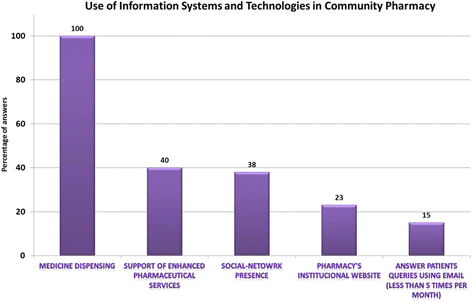
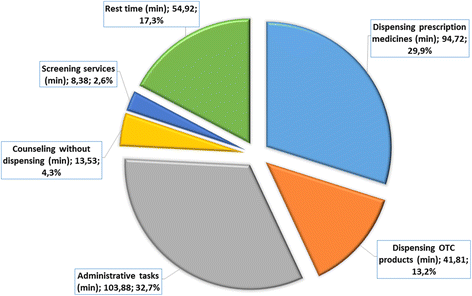
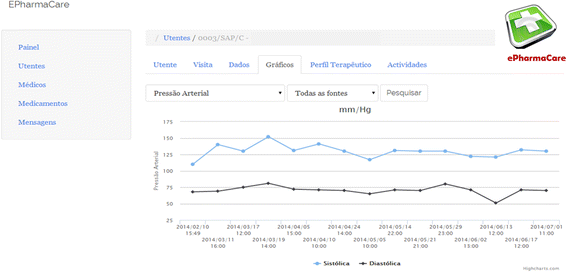
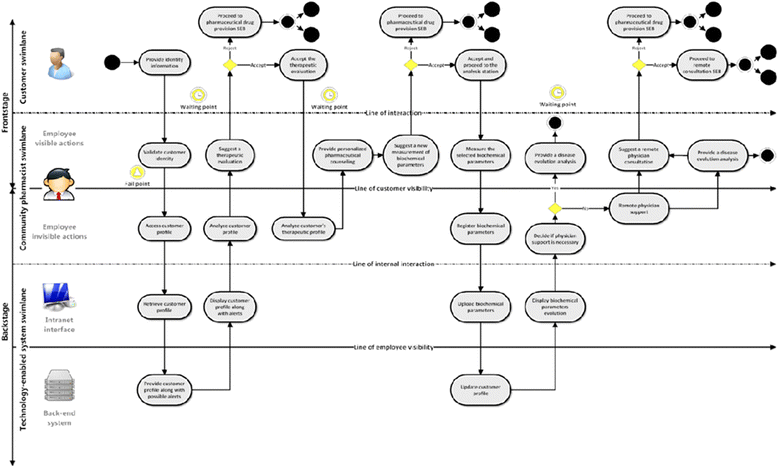
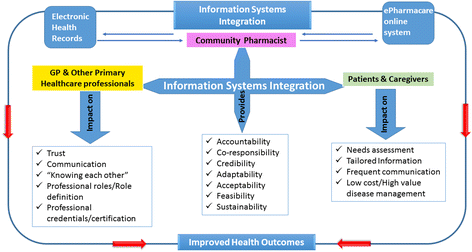
Similar articles
-
Online Pharmaceutical Care Provision: Full-Implementation of an eHealth Service Using Design Science Research.Stud Health Technol Inform. 2015;210:261-5. Stud Health Technol Inform. 2015. PMID: 25991146
-
Using design science research to develop online enhanced pharmaceutical care services.Stud Health Technol Inform. 2014;205:266-70. Stud Health Technol Inform. 2014. PMID: 25160187
-
Qatar pharmacists' understanding, attitudes, practice and perceived barriers related to providing pharmaceutical care.Int J Clin Pharm. 2016 Apr;38(2):330-43. doi: 10.1007/s11096-016-0246-0. Epub 2016 Jan 12. Int J Clin Pharm. 2016. PMID: 26758716
-
Pharmaceutical care in community pharmacies: practice and research in Canada.Ann Pharmacother. 2005 Sep;39(9):1527-33. doi: 10.1345/aph.1E456. Epub 2005 Jul 12. Ann Pharmacother. 2005. PMID: 16014374 Review.
-
Telepharmacy Services: Present Status and Future Perspectives: A Review.Medicina (Kaunas). 2019 Jul 1;55(7):327. doi: 10.3390/medicina55070327. Medicina (Kaunas). 2019. PMID: 31266263 Free PMC article. Review.
Cited by
-
Facilitators and strategies to implement clinical pharmacy services in a metropolis in Northeast Brazil: a qualitative approach.BMC Health Serv Res. 2018 Aug 13;18(1):632. doi: 10.1186/s12913-018-3403-4. BMC Health Serv Res. 2018. PMID: 30103749 Free PMC article.
-
How Can We Develop an Efficient eHealth Service for Provision of Care for Elderly People with Balance Disorders and Risk of Falling? A Mixed Methods Study.Int J Environ Res Public Health. 2021 Jul 11;18(14):7410. doi: 10.3390/ijerph18147410. Int J Environ Res Public Health. 2021. PMID: 34299861 Free PMC article.
-
Determinants of physicians' online medical services uptake: a cross-sectional study applying social ecosystem theory.BMJ Open. 2021 Sep 16;11(9):e048851. doi: 10.1136/bmjopen-2021-048851. BMJ Open. 2021. PMID: 34531212 Free PMC article.
-
A mobile app implementing the international classification of functioning, disability and health rehabilitation set.BMC Med Inform Decis Mak. 2020 Jan 28;20(1):12. doi: 10.1186/s12911-020-1019-1. BMC Med Inform Decis Mak. 2020. PMID: 31992289 Free PMC article.
-
Understanding Clinicians' Adoption of Mobile Health Tools: A Qualitative Review of the Most Used Frameworks.JMIR Mhealth Uhealth. 2020 Jul 6;8(7):e18072. doi: 10.2196/18072. JMIR Mhealth Uhealth. 2020. PMID: 32442132 Free PMC article.
References
-
- WHO . Global status report on Non-communicable diseases. 2010.
-
- WHO . World health report - primary health care: Now more than ever. Geneve: WHO; 2008.
-
- Makowsky MJ, Schindel TJ, Rosenthal M, Campbell K, Tsuyuki RT, Madill HM. Collaboration between pharmacists, physicians and nurse practitioners: a qualitative investigation of working relationships in the inpatient medical setting. J Interprof Care. 2009;23:169–84. doi: 10.1080/13561820802602552. - DOI - PubMed
Publication types
MeSH terms
LinkOut - more resources
Full Text Sources
Other Literature Sources

